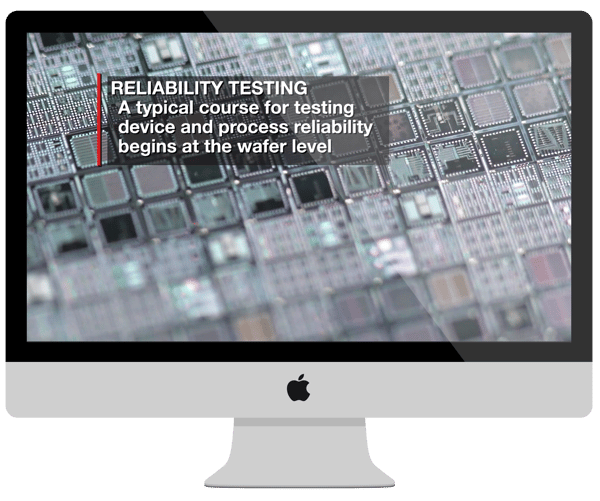When it comes to reliability testing, the fixture is possibly the most important element of the whole system. Typical test plans involve stressing the device-under-test (DUT) at elevated temperatures to track any changes in performance. The test fixture must be able to withstand this extreme range of temperatures while still providing a consistent interface for DC and RF signals into and out of the device. The combination of thermal management, device power dissipation, and high frequency signal routing make the test fixture implementation critical to any successful reliability test.
However, designing a fixture in-house is challenging. It is a highly technical and incredibly time-consuming task that requires careful planning and consideration. With decades of experience designing, producing, and refining fixtures, Accel-RF works closely with customers to develop fixtures that accomplish their exact needs.
Accel-RF Fixture Types
Accel-RF provides three different fixture models: the Standard RF Fixture, the RF-Ready DC Fixture, and the Quantum SMART Fixture.
Standard RF Fixture 
Accel-RF’s primary fixture solution; it is used for a wide range of RF and DC testing. A built-in heater controller allows precise temperature control up to 300°C. The standard RF fixture is capable of pulsed operation through its on-board pulse generation circuitry. It employs SMA input/output connections and for RF output powers over 50W, an N-type connector may be used.
Learn more about the RF Fixture
RF-Ready DC Fixture 
The small-footprint RF-Ready DC Fixture has been the industry standard for DC life testing for over a decade. Used almost exclusively for DC testing, it also supports RF characterization, making it extremely modular. This fixture is capable of supporting over two dozen package types and is easily configurable by the user to switch between package types.
Learn more about the RF-Ready DC Fixture
Quantum SMART Fixture
Accel-RF’s newest fixture solution. The Quantum SMART Fixture features a two-piece structure that enables simple switching between DUT types. The fixture can be configured for testing at a wide range of frequencies, including Ka-Band for 5G applications.
Learn more about the Quantum SMART Fixture
Different Packages Require Different Fixture Designs
Because semiconductor packages come in a variety of shapes and sizes, the fixture needs to be configured appropriately in order to accommodate the dimensions of the package. Furthermore, details such as the number of leads the package has, how biasing or RF is applied, how the package is mechanically held down, the required bandwidth, and the temperature range all contribute to the required specifications and design elements of the fixture.
Accel-RF Provides Custom Fixture Solutions
Accel-RF can accommodate a wide range of commercially available packages for its fixtures. In addition to this, Accel-RF can support new and novel package types through custom design to meet the end user’s requirements. This will require a mechanical drawing of the package or contact with the manufacturer.
To configure a fixture for a reliability test, the following parts are required:
- Input matching circuit assembly: This provides the DC and RF interface to the input side of the DUT. This circuit must be temperature resistant since it will make direct contact with the area of the fixture that will be running hot. This circuit can be configured for either providing a 50-ohm impedance for internally-matched devices or a custom source impedance for a discrete transistor.
- DUT assembly: A mounting adapter plate or socket and top clamp make up the inner DUT assembly area. These components will be directly subjected to the same temperature extremes of the DUT, so consistent performance is crucial
- Output matching circuit assembly: This consists of a circuit board and surface mount components for bias and RF matching to provide the correct load impedance to the device. On top of the same temperature requirements as the input circuit, this circuit must also be sized properly for the higher power signals associated with the output if the DUT is an amplifier.
Accel-RF offers the design and fabrication of these DUT-specific components as a turnkey service. Alternatively, the customer can design and fabricate their own circuits, in which case Accel-RF provides the customer with the dimensional requirements so that the appropriate circuits can be designed and constructed.
Accel-RF recommends a conference call with the customer after some preliminary information exchange has occurred; this is to establish the DUT fixture configuration and to ensure that the required parts are delivered in time for the device to be ready for mounting when received.
Fixtures Designed For Configurability and Adaptability
Accel-RF’s fixtures are designed with the purpose of modularity and adaptability. This means that instead of starting over from the beginning for a new project with new testing requirements, the customer can reconfigure the current fixture — enabling it to be used with the new parameters.
Customer Collaboration, Guidance, and Support Throughout the Fixture Development Process
From the beginning of the process to the end, Accel-RF works closely with its customers, providing support throughout all stages, including fixturing, circuit design, circuit construction, as well as providing on-site training.
The close collaboration with customers, as well as the technical expertise regarding fixture design, has enabled Accel-RF to design dozens of fixtures — each with their own customized circuits, adapter plates, and clamping mechanisms that are tailor-made for each package and DUT.


